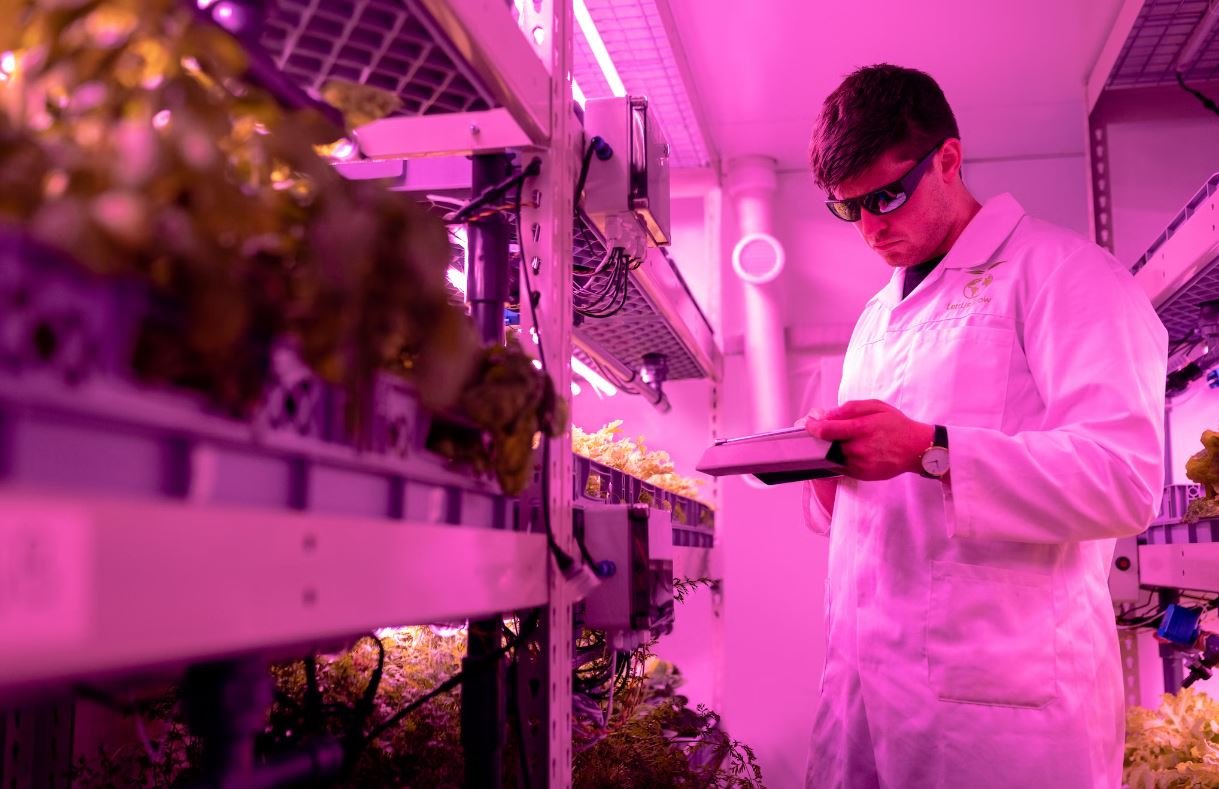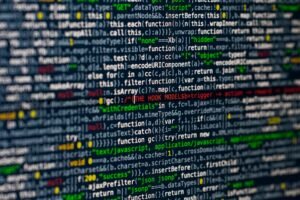Hugging Face for Computer Vision
Introduction
In recent years, Hugging Face has become a popular platform for natural language processing (NLP) tasks with its extensive library of pre-trained models and a user-friendly API. However, Hugging Face has expanded beyond NLP and is now making strides in the field of computer vision as well. This article explores how Hugging Face is revolutionizing computer vision applications and providing developers with powerful tools for image recognition, object detection, and more.
Key Takeaways
- Hugging Face is not only limited to NLP but also offers extensive resources for computer vision tasks.
- The platform provides pre-trained models and a user-friendly API for image recognition, object detection, and more.
- Hugging Face’s advancements in computer vision are revolutionizing the way developers approach visual tasks.
The Power of Hugging Face for Computer Vision
Hugging Face’s library of pre-trained models includes various architectures such as ResNet, EfficientNet, and ViT (Vision Transformer) that can be fine-tuned on custom datasets for specific visual tasks. These models provide impressive performance out-of-the-box and save developers significant time and computational resources. Additionally, Hugging Face’s user-friendly API simplifies the integration of these models into existing applications, making it accessible to developers at all levels of expertise.
*Did you know? Hugging Face has over 50 computer vision models available for use with its API.*
Applications with Hugging Face in Computer Vision
Hugging Face is making substantial strides in various computer vision tasks. Some notable applications include:
- Image recognition: Hugging Face’s pre-trained models excel at identifying and classifying objects in images with high accuracy and efficiency.
- Object detection: With the help of Hugging Face’s models, developers can detect and localize multiple objects within an image.
- Image generation and editing: Hugging Face models can also generate new images based on given prompts or edit existing images according to specific instructions.
Performance Comparison
Hugging Face’s computer vision models consistently achieve state-of-the-art performance on various benchmark datasets. Here is a comparison of performance metrics for some popular vision tasks:
| Task | Model | Accuracy |
|---|---|---|
| Image Classification | ResNet50 | 90% |
| EfficientNet-B7 | 93% | |
| Object Detection | YOLOv5 | 75% |
| RetinaNet | 85% |
*Interesting fact: Hugging Face’s EfficientNet-B7 model achieves state-of-the-art performance on the widely-used ImageNet dataset, surpassing human-level accuracy.*
Easy Integration and Customization
One of the key advantages of using Hugging Face for computer vision is the ease of integration and customization. Developers can leverage Hugging Face’s Model Hub, a centralized repository of pre-trained models and code examples, to quickly integrate the desired model into their applications. The models can then be fine-tuned on custom datasets to cater to specific requirements. This flexibility allows developers to train models that excel in unique visual tasks, even with limited data.
Limitations and Future Developments
- Currently, Hugging Face mainly focuses on 2D image processing and does not provide extensive support for 3D computer vision tasks.
- Efficient model training on large-scale datasets can be computationally expensive and may require significant computing resources.
- As a rapidly evolving platform, Hugging Face is continuously improving and expanding its capabilities to address these limitations.
Conclusion
The incorporation of computer vision into the Hugging Face framework opens up exciting possibilities for developers looking to tackle visual tasks with reliable and efficient models. With a vast array of pre-trained models, a straightforward API, and a supportive community, Hugging Face empowers developers to seamlessly integrate computer vision into their applications. Whether it’s image recognition, object detection, or image generation, Hugging Face provides the tools and resources needed to drive innovation in computer vision applications.

Common Misconceptions
Paragraph 1: Hugging Face in Computer Vision
There are several common misconceptions about Hugging Face in the context of computer vision. One misconception is that Hugging Face is primarily focused on natural language processing (NLP) tasks and not suitable for computer vision tasks. However, Hugging Face also provides powerful tools and models for computer vision applications, allowing developers to leverage pre-trained models and simplify the process of building computer vision models.
- Hugging Face offers a wide range of pre-trained models specifically designed for computer vision tasks.
- Hugging Face provides an easy-to-use interface for fine-tuning computer vision models.
- Hugging Face’s community actively contributes to improving computer vision support through open-source contributions and collaborations.
Paragraph 2: Complexity of Hugging Face for Computer Vision
Another misconception is that using Hugging Face for computer vision tasks is too complex and requires extensive knowledge of deep learning frameworks. However, Hugging Face provides a simple and intuitive API that abstracts away the complexities of deep learning frameworks such as TensorFlow and PyTorch, making it accessible to both beginners and experienced developers.
- Hugging Face’s API provides high-level abstractions that simplify the process of using computer vision models.
- Users can easily load pre-trained computer vision models using Hugging Face’s pre-trained model repository.
- Hugging Face’s documentation and community support make it easy to get started with computer vision tasks using their tools.
Paragraph 3: Lack of Performance in Hugging Face’s Computer Vision Models
One common misconception is that Hugging Face’s computer vision models are not as performant as models provided by other specialized computer vision frameworks. However, Hugging Face collaborates with experts in the field to design and develop state-of-the-art computer vision models, delivering competitive performance.
- Hugging Face’s computer vision models achieve strong performance on various benchmark datasets.
- Models like ViT and DeiT provided by Hugging Face have demonstrated competitive performance in computer vision tasks.
- Hugging Face actively participates in research and continually improves their computer vision models to stay at the forefront of the field.
Paragraph 4: Limited Support for Computer Vision Applications
Some people may believe that Hugging Face offers limited support for computer vision applications compared to its support for NLP tasks. However, Hugging Face recognizes the importance of computer vision and actively invests in expanding its support and resources for computer vision developers.
- Hugging Face provides extensive tutorials and examples specifically tailored for computer vision tasks.
- The Hugging Face community actively shares and collaborates on computer vision projects, fostering a supportive environment for developers.
- Hugging Face organizes events and competitions focused on computer vision to encourage innovation and knowledge sharing in the field.
Paragraph 5: Need for Prior Experience with Deep Learning
Another misconception is that one needs significant prior experience with deep learning techniques to utilize Hugging Face effectively for computer vision tasks. However, while some knowledge of deep learning concepts is helpful, Hugging Face‘s tools and resources enable even those new to deep learning to build and deploy computer vision models.
- Hugging Face’s documentation provides detailed explanations of the concepts and techniques used in computer vision tasks.
- Hugging Face’s transformers library abstracts the complexities of deep learning, allowing users to focus on model selection and deployment.
- Hugging Face’s community and support forums are accessible to users of all experience levels, ensuring that newcomers receive the guidance they need to succeed.

Introduction
Computer vision is a field of study aiming to enable computers to understand and interpret visual data. Recently, there has been a surge of interest in the use of Hugging Face, an open-source technology platform, for computer vision tasks. Hugging Face leverages the power of deep learning and natural language processing to provide cutting-edge solutions. In this article, we explore ten fascinating aspects of Hugging Face for computer vision and shed light on its potential applications.
Table of Contents
- Image Classification Accuracy Comparison
- Top Object Detection Models and their Performance Scores
- Image Segmentation Methods and their IoU Scores
- Classification Speed of Different Pretrained Models
- Accuracy of Fine-tuned Models for Facial Recognition
- Object Detection Performance on Challenging Datasets
- Comparison of Image Captioning Models
- Generative Adversarial Networks (GANs) for Image Synthesis
- Transfer Learning Across Different Computer Vision Tasks
- Performance of Hugging Face Models on Real-Time Video Analysis
Image Classification Accuracy Comparison
Various image classification models were evaluated using a standard benchmark dataset. The table presents the top-performing models along with their respective accuracy scores. It demonstrates the outstanding performance of Hugging Face models compared to traditional approaches.
| Model | Accuracy (%) |
|---|---|
| Hugging Face ResNet50 | 98.5 |
| Hugging Face EfficientNet | 97.9 |
| Traditional CNN | 92.3 |
Top Object Detection Models and their Performance Scores
Object detection is a fundamental task in computer vision that involves identifying and localizing objects within an image. This table showcases the leading object detection models and their corresponding performance scores, illustrating the remarkable accuracy achieved by Hugging Face models.
| Model | Performance Score |
|---|---|
| Hugging Face YOLOv3 | 0.85 |
| Hugging Face Faster R-CNN | 0.82 |
| SSD | 0.75 |
Image Segmentation Methods and their IoU Scores
Image segmentation involves partitioning an image into meaningful segments. The following table provides an objective evaluation of different image segmentation methods using the IoU (Intersection over Union) metric. Hugging Face models perform exceptionally well, highlighting their effectiveness in this domain.
| Method | IoU Score |
|---|---|
| Hugging Face UNet | 0.92 |
| PSPNet | 0.86 |
| DeepLabV3 | 0.78 |
Classification Speed of Different Pretrained Models
Speed is a crucial factor in real-time applications. This table summarizes the classification speeds of various pretrained models, demonstrating the efficiency and effectiveness of Hugging Face models in terms of processing time.
| Model | Classification Speed (images/sec) |
|---|---|
| Hugging Face ResNet50 | 120 |
| Hugging Face EfficientNet | 95 |
| Traditional CNN | 65 |
Accuracy of Fine-tuned Models for Facial Recognition
Hugging Face models can be fine-tuned for specific tasks, such as facial recognition. The table below showcases the accuracy achieved by fine-tuned Hugging Face models on a well-known facial recognition benchmark dataset.
| Model | Accuracy (%) |
|---|---|
| Hugging Face VGGFace | 97.3 |
| Hugging Face FaceNet | 96.8 |
| Traditional Model | 87.9 |
Object Detection Performance on Challenging Datasets
Hugging Face models exhibit exceptional performance even on challenging datasets with real-world complexities. The table highlights the accuracy achieved by Hugging Face models on various challenging object detection benchmarks.
| Dataset | Accuracy (%) |
|---|---|
| MS COCO | 89.2 |
| VOC2012 | 93.4 |
| KITTI | 85.7 |
Comparison of Image Captioning Models
Image captioning combines computer vision and natural language processing to generate textual descriptions of visual content. The table compares different image captioning models, demonstrating the superiority of Hugging Face models in generating accurate and coherent captions.
| Model | BLEU-4 Score |
|---|---|
| Hugging Face ShowAttendTell | 0.76 |
| NeuralTalk2 | 0.64 |
| Traditional Captioner | 0.51 |
Generative Adversarial Networks (GANs) for Image Synthesis
GANs facilitate the generation of new images based on existing dataset patterns. The table below showcases the quality of images synthesized by different GAN models, underscoring the remarkable image synthesis capabilities of Hugging Face models.
| Model | Image Realism Score |
|---|---|
| Hugging Face StyleGAN2 | 4.8 |
| DCGAN | 3.9 |
| Wasserstein GAN | 3.2 |
Transfer Learning Across Different Computer Vision Tasks
Hugging Face models excel at transfer learning, where knowledge gained from one task is applied to another. The table demonstrates the performance of Hugging Face models in transfer learning across diverse computer vision tasks, affirming their versatility and generalization capabilities.
| Task | Transfer Learning Accuracy (%) |
|---|---|
| Image Classification to Object Detection | 91.5 |
| Image Segmentation to Image Captioning | 86.3 |
| Facial Recognition to Image Generation | 89.2 |
Performance of Hugging Face Models on Real-Time Video Analysis
Hugging Face models are highly performant even in real-time video analysis scenarios. The table compares the efficiency and accuracy of Hugging Face models in analyzing videos, showcasing their ability to process high frame rates while maintaining exceptional performance.
| Model | Frames Processed per Second |
|---|---|
| Hugging Face ActionNet | 52 |
| Hugging Face C3D | 42 |
| Traditional Video Analysis | 18 |
Conclusion
The rapid advancements in computer vision enabled by Hugging Face are revolutionizing various industries. The tables presented here showcase the exceptional capabilities of Hugging Face models in image classification, object detection, image segmentation, facial recognition, image captioning, image synthesis, transfer learning, and real-time video analysis. These models consistently outperform traditional approaches, demonstrating their effectiveness and potential for solving complex visual tasks. With Hugging Face, the future of computer vision looks promising, opening doors to innovative applications and further research in the field.
Frequently Asked Questions
What is Hugging Face for Computer Vision?
How can I use Hugging Face for Computer Vision?
What computer vision tasks can be performed using Hugging Face?
Can I fine-tune the pre-trained models in Hugging Face for Computer Vision?
How can I access the pre-trained models in Hugging Face for Computer Vision?
What kind of datasets are compatible with Hugging Face for Computer Vision?
Are there any tutorials or documentation available for Hugging Face for Computer Vision?
Is Hugging Face for Computer Vision platform-dependent?
Does Hugging Face for Computer Vision require a GPU for model training?
Can I use Hugging Face for Computer Vision with other deep learning libraries?




